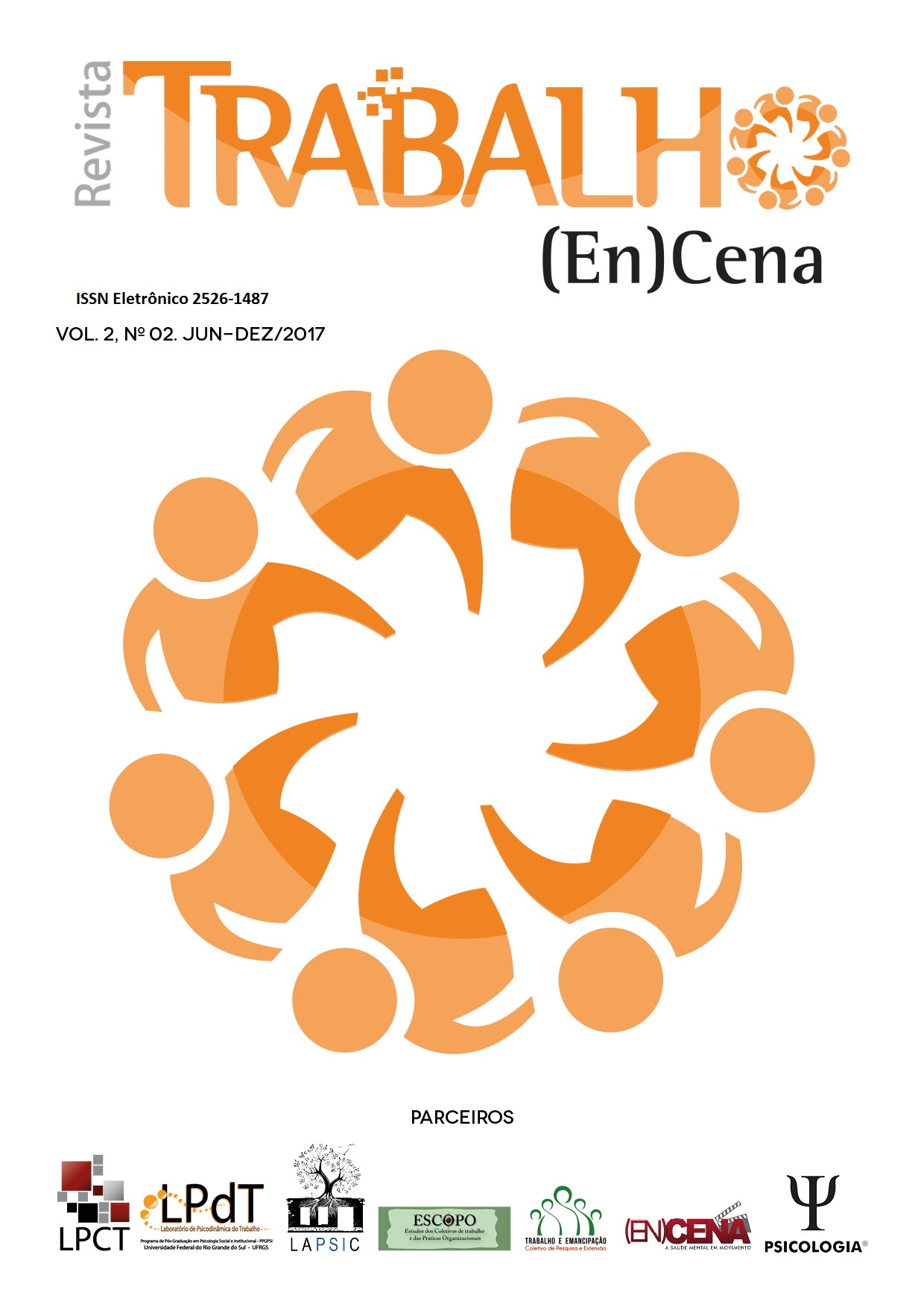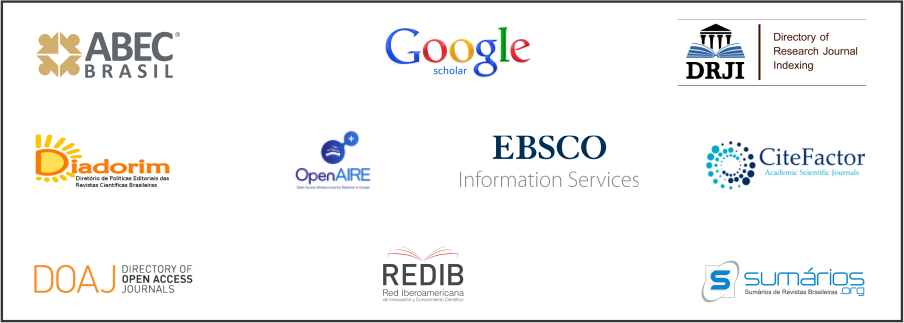Variable payment systems and union representation in multinational companies in Argentina
DOI:
https://doi.org/10.20873/2526-1487V2N2P114Keywords:
Multinationales, systèmes de paiement variable, syndicats, relations de travailAbstract
In the last years companies have developed a set of transformations in the field of Work Force Management trying to establish logics of salary differentiation tending to individualize labor relations. In this context the article aims to analyze the processes of wage individualization and the level of union penetration in multinational companies in Argentina, trying to determine how these two indicators are related. To analyze the variable payment systems, the scope and depth of the performance evaluations and the variable parts that make up the salary are taken into account. The degree of penetration of the unions is observed considering the union presence in workspaces and the level of affiliation. In addition, it seeks to establish the existing differences around variables such as the sector of activity and the origin of capital of companies. The study focuses on subsidiaries installed in the country through a qualitative approach, comprising semi-structured interviews with human resources managers.
References
Aronskind, R. (2015). Intuiciones y confrontaciones. Para pensar la política económica kirchnerista. Márgenes - Revista de Economía Política, 1 (1) 15-32.
Bartram, T. & Cregan, C. (2003). Consultative employment relations in human resource management environments with a union presence. The Journal Industrial relations, 45 (4), 539-545.
Bloom, M., Milkovich, G. & Mitra, A. (2003). International compensation: learning from how managers respond to variations in local host contexts. International Journal of Human Reource Managment, 14, 1350-1367.
Boltanski, L. & Chiapello, E. (2002). El nuevo espíritu del capitalismo. Madrid: Akal.
Brewster, C. (1993). Developing a “European” model of human resource management. International Journal of Human Resource Management, 4, 765–84.
Cooke, W. (2003) “The influence of industrial relations systems factors on foreign direct investment” en W. N. Cooke (ed.) Multinational Companies and Global Human Resource Strategies. Westport, CT, Quorum Books.
Cooper, R., Ellen, B., Briggs, C. & Van de Broek, D. (2009). Anti- unionism, Employer Strategy, and the Australian State, 1996–2005. Labor Studies Journal, 34 (3), 339-362.
Delfini, M. (2011). Relaciones laborales y “gestión de recursos humanos” en filiales de Empresas Multinacionales en Argentina. Revista Sociedad y Economía, 20, 149-170.
Delfini, M. & Roitter, S. (2007). Las relaciones laborales en una trama automotriz argentina. Cuadernos de Relaciones Laborales, 25 (1), 195-221.
Dølvik, J. & Nergaard, K. (2011). Variable pay, collective bargaining and trade unions: A comparison of machinery and banking companies in Norway. Economic and Industrial Democracy, 33(2), 267-293.
Dundon, T., Curran, D., Ryan, P. & Maloney, M. (2006). Conceptualising the dynamics of employee information and consultation: Evidence from the Republic of Ireland. Industrial Relations Journal, 37, 492–512.
Dunning, J. (1994). Re-evaluating the benefits of foreign direct investment. Transnational corporations, 13 (1), 27-51.
Ferner, A. & Almond, P. (2013). Performance and reward practices in foreign multinationals in the UK. Human Resource Management Journal, 23 (3), 241–261.
Flanders, A. (1970). Pay as an Incentive in Management and Unions: The Theory and Reform of Industrial Relations. London: Faber and Faber.
Flood, P. & Toner, B. (1997). Large non-union companies: How do they avoid a catch 22. British Journal of Industrial Relations, 35, 257–77.
Foulkes, F. (1980). Personnel Policies in Large Non-union Companies. Englewood Cliffs, N.J.: Prentice-Hall.
Foulkes, F. (1981). How top non-union companies manage employees. Harvard Business Review (Sept.–Oct.), 90–96.
Guest, D. (1987). Human resource management and industrial relations. Journal of Management Studies, 24, 503–521.
Gunnigle, P., Lavelle, J. & McDonnell, A. (2007). Industrial relations in MNC: double-breasting and trade union avoidance in Ireland. Working Paper, Department of Personnel and Employment Relations, Kemmy Business School, University of Limerick, National Technological Park, Limerick, Irlanda.
Gall, G. (2009). Statutory Union Recognition Provisions as Stimulants to Employer Anti-Unionism in three Anglo-Saxon Countries. Economic and Industrial Democracy, XX (X), 1-27.
Hernández Romo, M. (2014). Alternativas para el análisis de las multinacionales. ¿Hacia dónde va el Neo-institucionalismo? Revista Trabajo, 8 (12), 24-64.
Jacoby, S. (1985). Employing Bureaucracy Managers, Unions, and the Transformation of Work in the 20th Century. London: Lean.
Lavelle, J., Gunnigle, P. & McDonnell, A. (2010). Patterning employee voice in multinational companies. Human relations, 63 (3), 395–418.
Léonard, E., Pulignano, V., Lamare, R. & Edwards, T. (2014). Multinational corporations as political players. Transfer, 20 (2), 171–182.
Lepak, D. & Snell, S. (1999). The human resource architecture: toward a theory of human capital allocation and development. Academy of Management Review, 24 (1,) 31–48.
Lewchuck, W. & Wells, D. (2007). Transforming Worker Representation: The Magna Model in Canada and Mexico. Labour /Le travail, 60, 108-138.
Marginson, P., Arrowsmith, J. & Gray, M. (2008). Undermining or reframing collective bargaining? Variable pay in two sectors compared. Human Resource Management Journal, 18 (4), 327-346.
Nergaard, K., Dølvik, J., Marginson, P., Arasanz Díaz, J. & Bechter, B. (2009). Engaging with Variable Pay: A Comparative Study of the Metal Industry. European Journal of Industrial Relations; 15; 125-146.
Purcell, J. (1987). Mapping management styles in employee relations. Journal of Management Studies, 24, 533–548.
Royle, T. (1998). Avoidance Strategies and the German System of Co-determination. International Journal of Human Resource Management, 9 (1), 1026-1047.
Sklair, L. (2003). Sociología del Sistema Global. Barcelona: Gedisa.
Tempel, A. (2001). The Cross-National Transfer of Human Resource Management Practices in German and British Multinational Companies. Mering: Rainer Hampp Verlag.
Trif, A. & Geary, J. (2016). The purpose of variable pay schemes and trade unions. Employee Relations, 38 (2), pp.182-199, https://doi.org/10.1108/ER-01-2015-0004
UNCTAD (2017), World Investment Report 2008 – Transnational Corporations and the Infrastucture Challenge, Naciones Unidas, Nueva York
Van Het Kaar, R.H. and Grünell, M. (2001). Variable pay in Europe. EIR Observer, 3 (1), 1-8.
Downloads
Published
How to Cite
Issue
Section
License
Os direitos autorais dos artigos publicados pela Revista Trabalho EnCena permanecem propriedade dos autores, que cedem o direito de primeira publicação à revista. Os autores devem reconhecer a revista em publicações posteriores do manuscrito. O conteúdo da Revista Trabalho EnCena está sob a Licença Creative Commons de publicação em Acesso Aberto. É de responsabilidade dos autores não ter a duplicação de publicação ou tradução de artigo já publicado em outro periódico ou como capítulo de livro. A Revista Trabalho EnCena não aceita submissões que estejam tramitando em outra Revista. A Revista Trabalho EnCena exige contribuições significativas na concepção e/ou desenvolvimento da pesquisa e/ou redação do manuscrito e obrigatoriamente na revisão e aprovação da versão final. Independente da contribuição, todos os autores são igualmente responsáveis pelo artigo.






